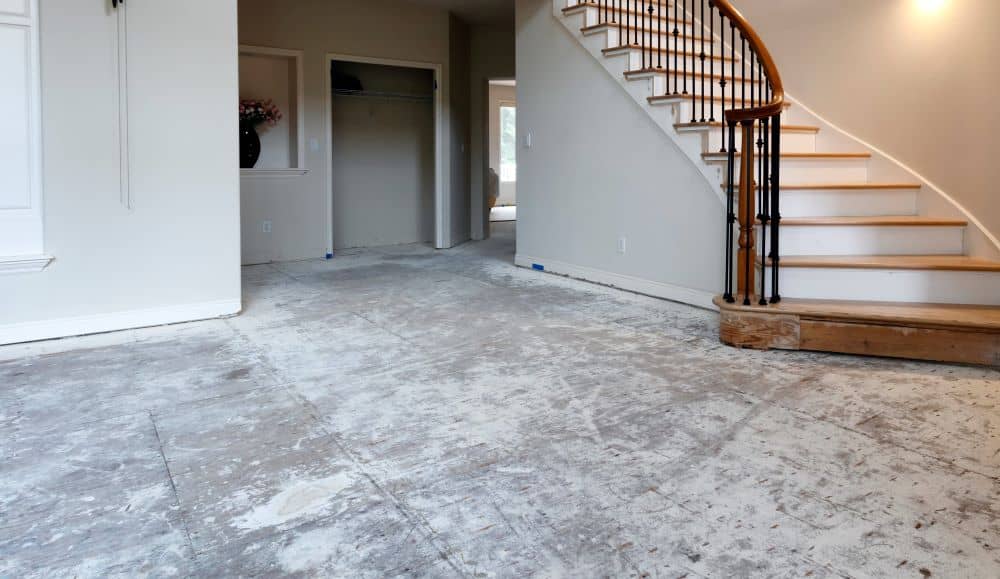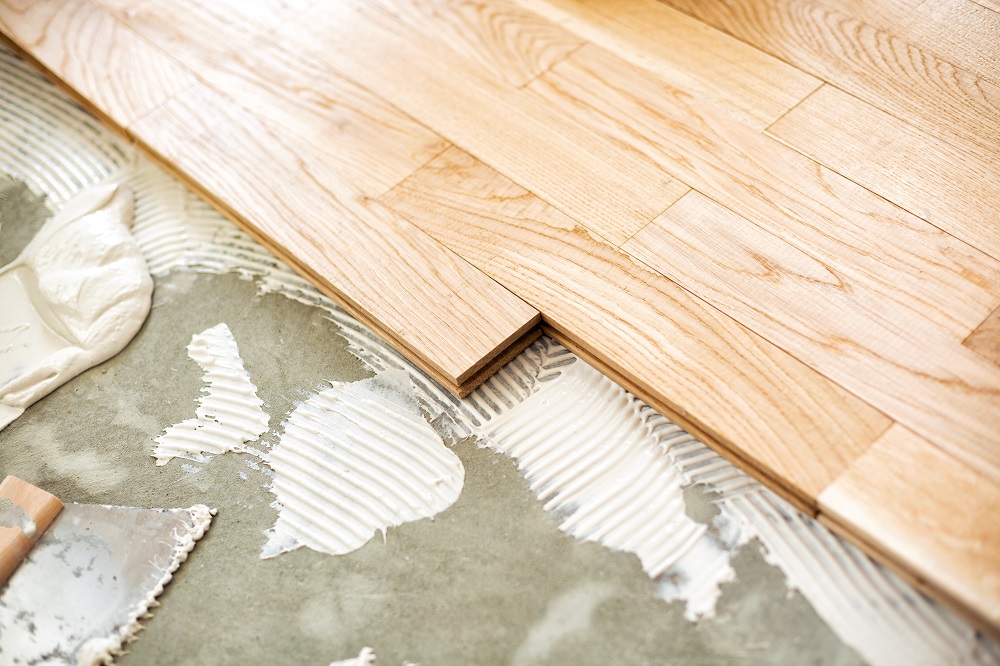Properly prepared and suitable subfloors serve as a strong foundation for your new flooring, ensuring its functionality and longevity for years to come. Unfortunately, many homeowners are unfamiliar with how important a quality subfloor is and the extensive preparation that goes into assessing and confirming its integrity.
Because a properly prepared subfloor is crucial to the overall performance of your new floors, it is important to be aware of the many aspects of successful subfloor preparation.
As with any home improvement project, understanding the importance of subfloor preparation will help make the installation process easier and less stressful. Here are some of the key factors that go into preparing a subfloor and why they are so crucial.
What Is A Subfloor?
A subfloor refers to the floor that serves as the foundation in a building. Plywood and concrete are both common types of subfloor (in Australia yellow tongue is used instead of plywood). Typically basements, houses made of materials other than wood, and skyscrapers have cement subfloors, and above grade (above ground) wooden family houses typically have a plywood or yellow tongue subfloor. A subfloor may also refer to the type of flooring already installed if you are updating the flooring.
For remodelling projects, some owners install the new flooring directly on top of the old flooring or tear up the old flooring before proceeding with the installation.
Whether or not new floors should be installed directly on top of old floors depends on a variety of factors. It is important to be aware that installing new floors over the top of old floors can pose issues with the overall appearance of the flooring, the clearance of appliances, add additional height that can prevent doors from swinging properly, and add unnecessary weight.
Why Is Subflooring Important?
Our answer to this common question is always the same: because the finished floor is only as good as the subfloor. The quality of the subfloor directly affects the performance of the flooring, meaning a faulty subfloor can actually cause the flooring to fail or underperform.
A subfloor that is not flat enough, not dry enough, not properly cleaned, not structurally sound, or faulty in any area can lead to a host of unwanted results such as:
- Uneven spots
- Excessive wear on high spots
- Unsightly surface variations
- Decreased lifespan
- Sagging
- Squeaking within the floor system
- Decreased comfort
- Excessive movement and shifting
- Separation
- Damage
These issues can multiply with time and, at worst, end up requiring repair or reinstallation of some or all of the flooring.
Requirements
Regardless of which type of flooring you choose, some degree of subfloor preparation will be necessary. Each installation is unique and will require its own specific preparations.
For a subfloor to serve as an appropriate base for your new flooring, a number of requirements must be met:
- Properly cleaned and free of any dust and debris
- Flat (level within 3/16 of an inch or 4.7 mm for every 10 feet)
- Structurally sound
- If tile is serving as the subfloor, grout lines must be filled in to ensure an even surface
- Plywood subfloors must be sanded or repaired with cement compound to ensure a completely level surface
- Underlay can help cover minor irregularities, but is not suitable as a fix
- Clear of any loose screws or nails
- Dry

A properly prepared subfloor is crucial for the installation of new floors.
Questions To Ask Before Installing Your New Floors
Before installation, there are a variety of crucial questions to consider:
- What type of flooring is going to be installed?
- Is it a new construction or a remodel?
- It is a commercial or residential project?
- Has the subfloor been tested for pH and moisture?
- Is the subfloor level, structurally sound, dry, smooth, and clean?
- Have compounds or sealers been used?
- What is the current subfloor and what is it over?
- Is there a crawl space?
Of course, there are still other factors that must be considered when prepping a subfloor, but this gives you a general idea of some of the most important aspects.
Other Considerations
When evaluating the integrity of a subfloor, it is also important to consider something known as “grade levels”. This term refers to the different levels of a home:
- Above grade – Any floor above ground level such as a second or third story
- On grade – The ground level floor
- Below grade – The floor below the ground level (a basement)
These levels are important since different aspects affect each one differently. For example, when considering an on-grade installation, it is important to assess the efficiency of the basement or crawlspace’s ventilation.
Moisture is a big concern when it comes to below-grade installations. Above-grade installation takes into account whether or not the subfloor is sufficient to support the flooring being installed.
Can An Owner Handle Subfloor Prep?
Can I do subfloor prep myself? We hear this question from time to time and our answer depends on the specific project, the type of flooring, how much experience an owner has, and many other factors.
Please do not hesitate to contact us if you have any questions regarding subfloor preparation. We know DIY flooring installation is a growing trend and we would be happy to talk about your current subfloors and walk you through the entire process to determine the best route for you.
Your Subfloor Experts
Ultimately, skipping proper subfloor preparation can cause your floor’s performance to suffer and lead to frustrating, costly issues down the road.
We know there are an overwhelming number of factors to consider when prepping your subfloor and that is where our experienced team comes in. Correct prep is a result of years of experience, industry-specific knowledge, and a thorough understanding of subflooring.
We take the mystery out of subfloor preparation and ensure your flooring is installed over an extensively examined, properly prepared, and appropriate subfloor. Contact us today with any questions and we would be happy to help you with your project, regardless of where you are at in the planning process.



